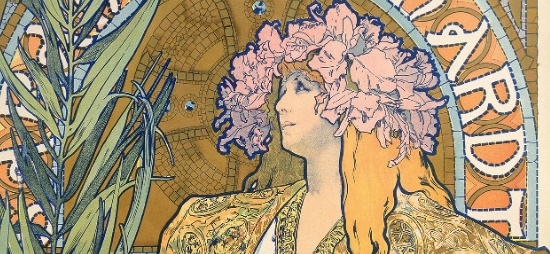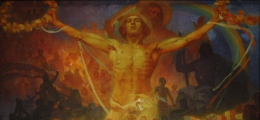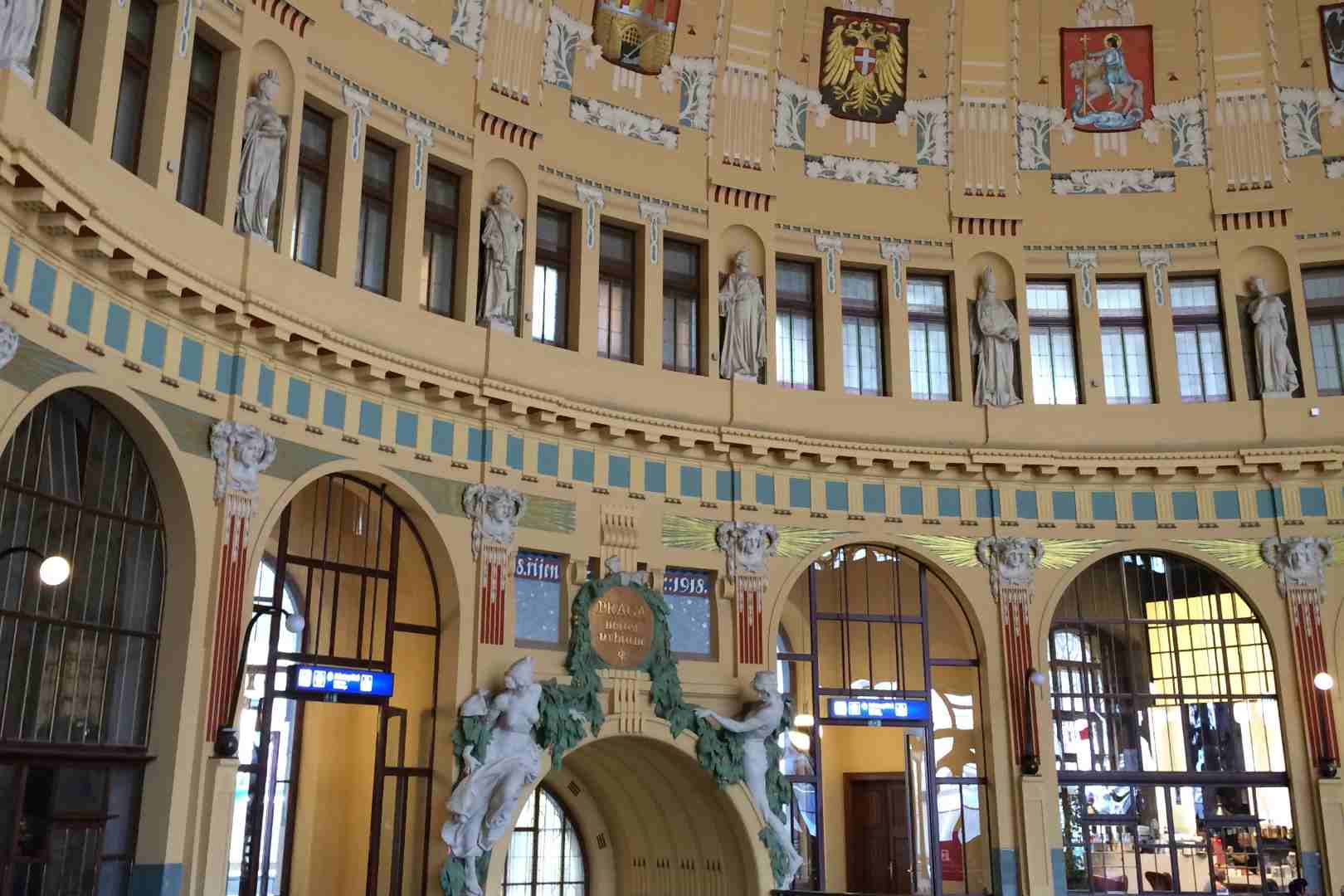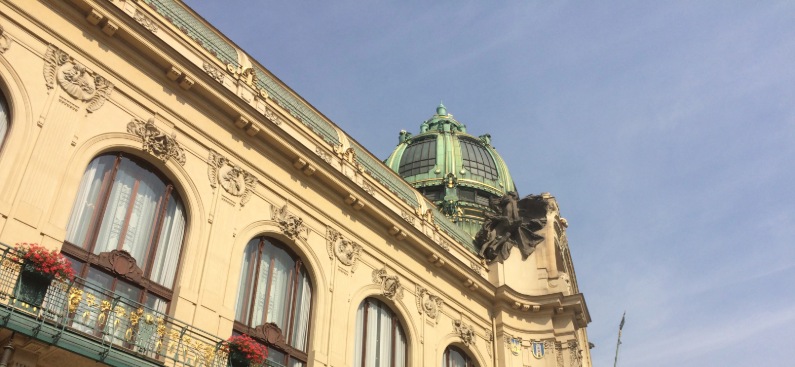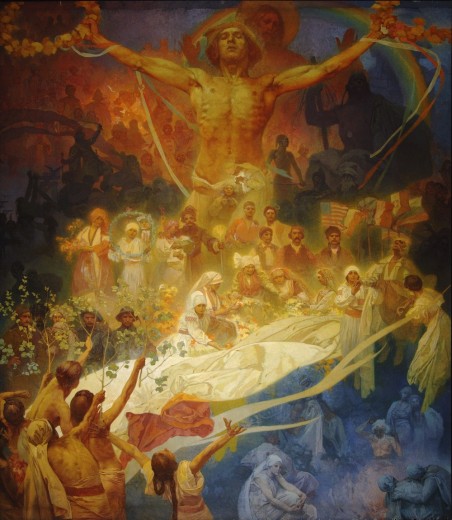The Mucha Museum, dedicated to the renowned Art Nouveau artist Alphonse Mucha, is set to open in a new location in Prague. After concluding its previous operating agreement, the museum will reside in the recently restored Baroque Savarin palace on Na Prikope street, near the city’s historic Old Town Square. The renovated space, courtesy of Prague-based real estate developer Crestyl, will showcase Mucha’s iconic works, including lithographs and posters created for theatrical productions.
Alphonse Mucha dedicated 18 years to creating The Slav Epic, a monumental series of 20 canvases that capture moments from Slavic history and mythology. He completed the series in 1928, a decade after Czechoslovakia gained independence from the Austro-Hungarian Empire. Despite its grandeur, The Slav Epic faced a turbulent history.
Initially displayed in Prague, the series was quickly hidden away, even stashed under a pile of coal when the Nazis invaded in 1939. It wasn’t exhibited again until 1963 at Moravský Krumlov castle near Mucha’s hometown. However, as the castle fell into disrepair, the works were removed in 2011, only to be reinstalled a decade later after restoration. The cycle also toured Japan in 2017, attracting 660,000 viewers.
Mucha had donated The Slav Epic to Prague in 1913, on the condition that the city find a suitable venue. After years of disputes, a resolution was finally reached: the works will be permanently housed in the Savarin Palace, in a space designed by acclaimed British architect Thomas Heatherwick. This new section, made to display the canvases as Mucha intended, is set to open by 2028, marking the 100th anniversary of the series’ completion.
The Savarin Palace itself, a site steeped in Czech cultural history, now features 11 restored original Baroque sculptures by Ignác František Platzer. It was once home to the Ethnographic Museum and a renowned social club visited by notable figures like journalist Ferdinand Peroutka, director Hugo Haas, and playwright Jan Werich. Later, it became known as a venue for social events and the world’s first black-light theater.
Accompanying the new display of The Slav Epic will be four smaller reproductions of the canvases, which range in size from 215 to 540 square feet (20 to 50 square meters), offering a glimpse into Mucha’s artistic vision on a more accessible scale.
The last years we have been informing on developments on the movement of Slav Epic works, and we recommend this article we published a long time ago: CLICK HERE to read it and enjoy the pictures included.
Current and upcoming Mucha exhibitions include Grand Palais Immersif in Roanoke, Virginia (opened October 24, 2024), Tokyo’s Bunkamura Hikarie Hall (opens December 3, 2024), and Mucha Trail 2025 at Expo 2025 Osaka (opens April 13, 2025). Timeless Mucha: The Magic of Line will tour at The Phillips Collection, Washington DC (opens February 22, 2025).
A new Prague museum dedicated to Czech Art Nouveau painter Alfons Mucha will offer “art for everyone” when it opens this month, ultimately housing his giant Slav Epic masterpiece after decades in storage. Mucha (1860-1939), a painter, graphic artist, and designer, gained fame for his floral posters, particularly those featuring French actress Sarah Bernhardt.
Located in the Baroque Savarin Palace in Prague’s UNESCO-listed historic center, the museum will showcase over 100 works, including paintings, lithographs, and sketches, starting February 24. It will also provide a long-sought home for Mucha’s grand Slav Epic cycle. Prague’s 15,000 m² Savarin project, led by British architect Thomas Heatherwick, is a major urban redevelopment featuring restored historic buildings, green spaces, and commercial areas. Construction began in 2021, with the Baroque Savarin Palace renovation completed in September 2024.
Mucha believed art should not be confined to elite salons, viewing his Parisian posters as a way to transform streets and squares into open-air galleries accessible to all. Most of the artwork on display comes from the family’s collection of approximately 4,000 pieces.
The Mucha Museum, named for Czech art nouveau artist Alfons Mucha, opened Feb. 24 in Prague. Housed in the renovated Baroque Savarin Palace on Na Prikope in the heart of the Czech capital and just off Wenceslas Square, the new museum features photographs from a private archive and some of the artist’s early oil paintings as well as his more well known art nouveau works, including “Princess Hyacinth,” the “Seasons” cycle, “Zodiac” and the posters featuring the famous French actress Sarah Bernhardt.
